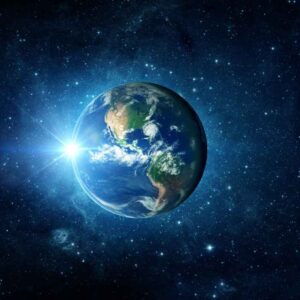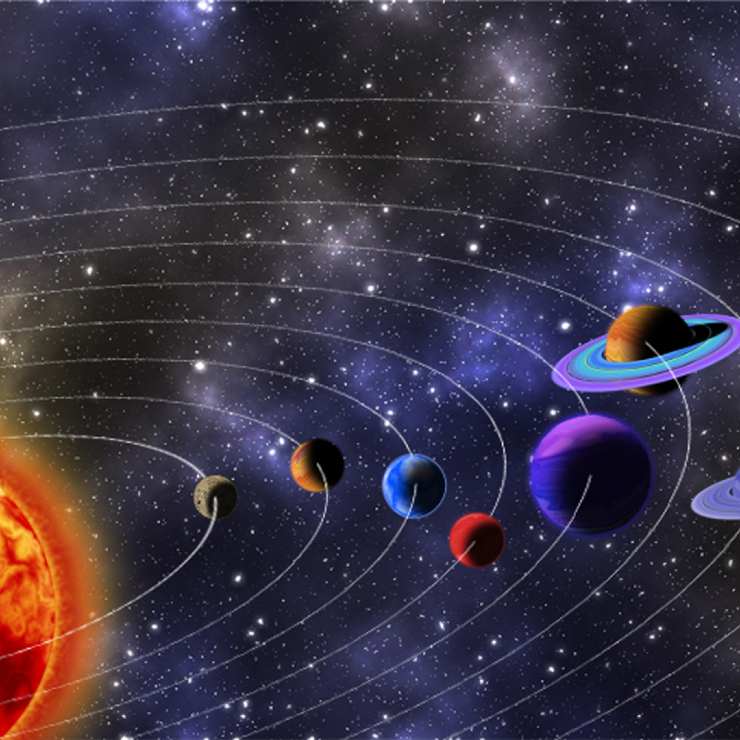The Earth in the solar system:-
Ever thought what space consists of? Wanted to know about what is around us in the sky? Let us get some in-depth knowledge of the things around us!
The Universe is everything. It is impossible for us to know how large it is. The Universe has billions of galaxies that have billions of stars, planets, moons and other celestial bodies. Our Solar system is a part of the Milky Way galaxy. Our home planet, Earth is a part of this solar system along with other bodies. The Earth in the Solar System is an important part of the universe and we will know more about it.
What makes our solar system?
Our Solar system consists of a huge star at the centre, the Sun which is surrounded by the Planets, their moons and millions of asteroids, comets and meteoroids. These are collectively called celestial bodies.
The Sun:-
The Sun is the largest and hottest celestial body in our Solar System. It is nearly 150 million kilometres away from the Earth and is made up of hot gases. It is situated in the centre of the solar system and attracts all other bodies and makes them revolve around it with its gravitational pull. It is the primary and the ultimate source of energy and light across the solar system.
Planets:-
A Planet is a large body that revolves around the sun or any other star and doesn’t have the light of its own. There are 8 major planets in our solar system. The first four planets – Mercury, Venus, Earth and Mars, make up the Inner Solar System. The outer four planets – Jupiter, Saturn, Uranus and Neptune constitute the Outer Solar System.
Moons:-
These are the bodies that orbit around the planets. They are also called natural satellites and are made up of different substances. Earth’s moon is its only natural satellite and is 3,84,400 kilometres away from Earth.
Asteroids:-
These are the bodies that also revolve around the Sun and are found in huge amounts between the orbits of Mars and Jupiter. Scientists believe them to be the part of planets that exploded years ago.
Meteoroids:-
Meteoroids are small bodies that start falling towards planets. They burn up into much smaller pieces when they fall into the Earth’s atmosphere, due to their high speeds. These are known as ‘Shooting Stars’.
The Planets
The Solar System consists of 8 planets. All of them in the order of distance from the Sun are:
- Mercury
- Venus
- Earth
- Mars
- Jupiter
- Saturn
- Uranus
- Neptune
There was a 9th Planet, Pluto. Because of its small size, it was declared as a dwarf planet in a meeting of the International Astronomical Union and thus only eight major planets are considered in our Solar system.
- There is an easy way to remember the names of these planets in order. That is:
“My Very Efficient Mother Just Served Us Nuts.”
The first letters of each word represent the first letters of the planets.
The Earth:-
Earth is the only known planet with life on it and is the third planet from the Sun and home to us. It has an atmosphere, oxygen and other gases, water sources and inhabits life.
It is the fifth-largest planet in the system and is smaller than the outer planets known as gas giants i.e. Jupiter, Saturn, Uranus and Neptune.
The Earth, although seems to be like a ball, it’s not perfectly round. It is an oblate spheroid that is squashed at the poles and bulged out at the equator. It has a diameter of approximately 8000 miles.
It is covered by almost 71 percent of water.
The atmosphere of Earth consists of a variety of gases and the majority of the portion is Nitrogen occupying 78%, followed by Oxygen with 21% mainly produced by plants.
Movements of Earth:-
The Earth revolves around the Sun in a fixed path called orbit which is an elliptical path. It continuously revolves around the Sun and completes one revolution in 365.25 days which is recognised as one solar year on Earth. Apart from this movement, it also spins on an imaginary line known as the axis that runs from the North to the South Pole. It completes 23.934 hours to complete one rotation on its axis.
What’s inside the Earth?
The Core of Earth is about 7100 km wide. The outer part of the core is liquid whereas the inner core is solid. This core is responsible for the magnetic field of the planet, which helps in deflecting harmful particles shot from the sun.
The mantle is the part above the core which is 2900 km wide, which flows slowly. This slow movement causes earthquakes and formations of volcanoes and mountain ranges.
The uppermost part of the planet is the crust on which life exists.
Temperatures in the inner core can be nearly 7000 degrees Celsius while the outer core can be nearly 4000 degrees Celsius hot. The inner core temperature is much hotter than the surface of the sun.
Earth’s moon:-
The natural satellite of Earth is the moon that is 3500 kilometres wide, almost 1/4th of Earth’s diameter. The surface of moon is rocky and has craters on it. It has a weak atmosphere and has no water. Neil Armstrong was the first person to set foot on the surface of moon.
Life on Earth:-
Earth is the only celestial body in the universe that has life on it. It has millions of species of life, in different parts of the planets. It has all the important conditions for life.
The water is available in large amounts.
It also has an atmosphere which has oxygen, nitrogen and other important gases.
The food we need is also present.
These all things make Earth as the best planet for supporting life.
Some Interesting facts about our planet Earth:-
- The word Earth comes old English and German meaning ‘the ground’. With researches, scientists have found that the planet is around 4.5 billion years old.
- The earth revolves around the sun at some high speeds. It moves at nearly 30 kilometres per second and thus takes nearly 365 days to complete one revolution.
- It is slope around its axis at an angle of 23.4 degrees.
- The movement of the earth along its axis leads to the day and night time. The side towards Sun experiences day while the other face is in the night time.
- It is at a distance of 150 million kilometres from the Sun which is the ideal distance from the Sun for the sustaining of life.
- The larger portion of the planet is covered with water.
- Its atmosphere acts as a protective shield form meteoroids and breaks them midway.
- Earth’s core is as hot as the surface of the Sun.

Some other interesting facts:-
- The sun rays are seven times stronger on Mercury than that on Earth. It also completes one revolution around the sun in just 88 Earth days. A day on Mercury lasts about 180 Earth days.
- The largest moon in the Solar System is Jupiter’s Ganymede.
- About 99.86% of the mass of the Solar System is made up of the Sun.
- Sirius is a star that is much brighter than Sun and is the brightest star known to us.
- Ceres is the smallest dwarf planet in the universe found between Mars and Jupiter.
- Jupiter is the fastest rotator in the solar system as it takes only 10 hours to complete one rotation.
- Saturn recently overtook Jupiter with the planet with most moons.
